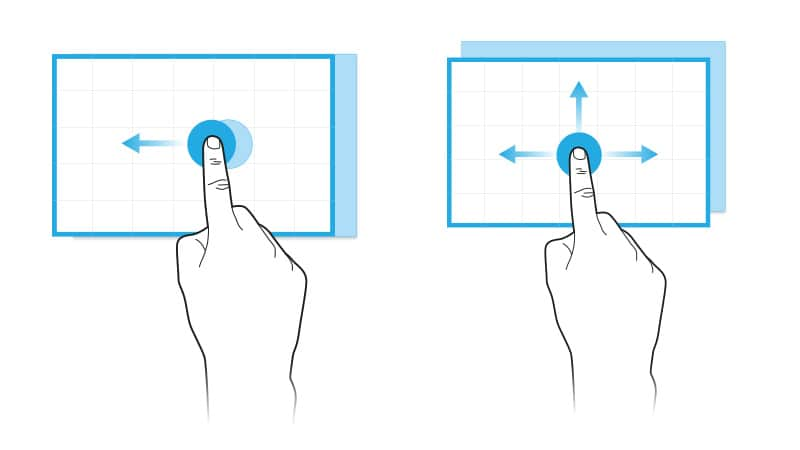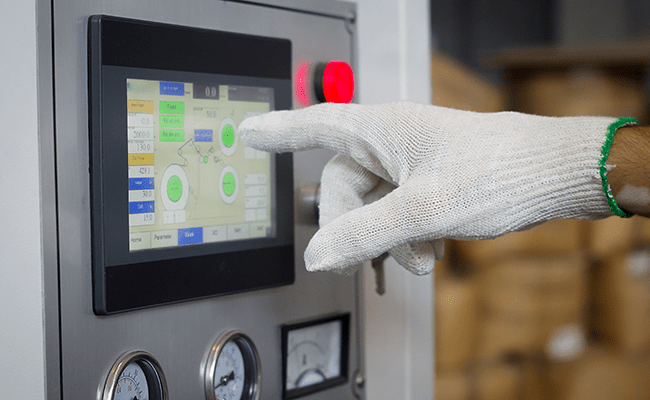
Expansion of Touchscreen Interface market and PCAP

PCAP used everywhere from consumer to industrial market
The majority of touchscreen products that you see in your daily life use the technology called projected capacitive (PCAP). Since PCAP was adopted in smartphones and tablet devices, it quickly came to be used in a wide variety of products due to its high transmittance and easy-to-use operation feeling resulting from its multi-touch functionality.
Before PCAP became the major touch screen technology, the resistive touchscreen had the largest market, used in industrial machinery, transportation, and amusement equipment. PCAP has replaced resistive touchscreen as the market leader. However, PCAP is not a universal technology. It may not be suitable for use under certain circumstances.
Unsuitable Environments for PCAP Touchscreens

There are several situations in which the PCAP touchscreens may not work properly. For example
- When gloves are used and direct contact with the touch screen is not made
- When electrical noise interferes with normal touch position detection
- Capacitive coupling due to liquid adhesion, etc., causing touch to be detected incorrectly.
All of these situations are common in industrial environments, and PCAP touchscreens malfunction due to factors that would not be a problem for resistive touchscreens, and therefore countermeasures in hardware and/or software are necessary. Since this is a frequent occurrence in medical and food factories, it has not always been easy to adopt touchscreens for these applications.
Touchscreens that combine the Stability of Resistive and Superior Operability of PCAP

MTR-G” for multi-touch even with resistive film
DMC has developed the MTR-G series of unique touchscreens based on the resistive touchscreen technology to solve these problems.
The MTR-G series is suitable for all environments and applications by incorporating the advantages of PCAP, such as two touch points, pinch-in/out/rotation gesture operation, and light-touch operation, while maintaining the characteristics of the resistive technology.
Comparison with conventional resistive two-point touch and DMC’s own solution
MTR-G is based on the 4-wire resistive structure, but there are significant differences.
Conventional 4-wire resistive structure have only one electrode each for XY axis, so it is difficult to detect coordinates when two or more points are touched. While the resistive gesture controller solution can predict locations of 2-points touch and outputs them, since it cannot detect the exact coordinates, it only supports pinching and rotation operations, not two-point input used in safety operation such as “Shift” key and “Fn” key operation. On the other hand, MTR-G divides the entire sensing area into 180 cells (in the case of 10.1″ or larger) in the vertical and horizontal directions. The dedicated controller detects the touch input information on each cell to realize two-point touch input with high accuracy.
- Conventional 4-wire resistive system
- DMC 4wire cell resistive system
Lighter touch than before

The MTR-G has a structure that reduces friction when the film and glass come into contact, so that input can be performed with less pressure than the conventional resistive touchscreen. Even better, by using a film with a smooth surface and slippery fingers on the upper substrate, multi-touch operations are easy. Compared to DMC’s conventional resistive type touch screen product, AST series with an activation force specification of 0.05N-0.8N, the MTR-G series is only 0.03N-0.3N, a 50% reduction of touch force.
PCAP-like gesture operation
MTR-G can perform PCAP-like gesture operations with the two-point touch and light-touch operation mentioned above.
A wide range of inputs method can be introduced to the interface, such as Flick/Pan/Pinch and Turn operations.
- Flick (left)/ Pan (right)
- Pinch (left)/ Turn (right)
What are the recommended environments for implementing resistive multi-touch?
Updating Your Operational Functions with MTR-G Series
Nowadays, operators at industrial workplace are demanding the same multi-touch gesture operation that they are familiar with smartphones, resulting in increase in switching from the resistive to PCAP. However, as mentioned above, PCAP requires consideration and countermeasures against ambient noise. As a result, switching from resistive to PCAP requires significant design change. Also, in a noisy installation environment, the controller may need to be adjusted locally, which would result in extra support cost.
By switching to MTR-G, it is possible to update a resistive touch screen with a multi-touch gesture operation without a major design change.
For the above reasons, MTR-G can be used in environments where PCAP is difficult to use, and in applications that require a highly flexible GUI configuration, such as gesture and “Shift” key operation.
Resistive touchscreen MTR-G series
- 5.7
- 7w
- 8.4
- 10.1w
- 10.4
- 12.1
- 12.1w
- 15
- 15.6w
- 17
- 18.5w
- 21.5w






